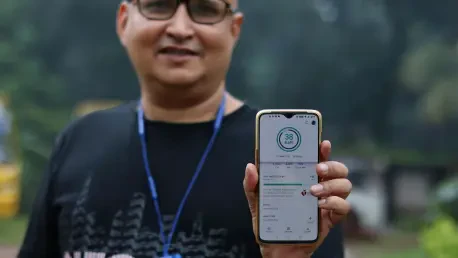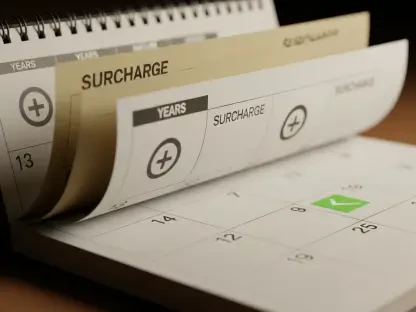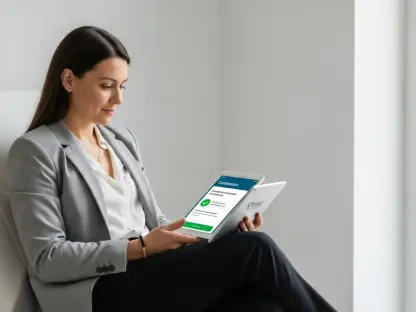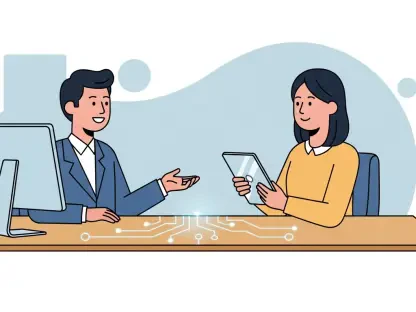In a bustling Tier-2 city in India, a young gig worker named Rohan checks his smartphone after a long day of deliveries, and a sudden notification about a health insurance plan costing just Rs. 12 a day catches his eye. For someone who has never considered insurance due to high costs and complex processes, this seems like a lifeline. With medical emergencies capable of wiping out savings in an instant, could digital platforms be the key to protecting millions like Rohan from financial ruin? This scenario underscores a critical issue facing the nation today—nearly 400 million Indians lack health insurance, and innovative solutions are urgently needed to address this gap.
The importance of this challenge cannot be overstated. Known as the ‘Missing Middle,’ this vast population—comprising gig workers, lower-income families, and unorganized sector employees—often falls through the cracks of traditional insurance systems. Every year, around 100 million individuals slip into poverty due to out-of-pocket medical expenses, according to various studies. Digital platforms, with their ability to reach remote corners and simplify access, offer a potential game-changer. This story explores how technology, through strategic partnerships, aims to shield vulnerable populations from the devastating impact of healthcare costs.
Why India’s Health Insurance Gap Needs Immediate Focus
The scale of the health insurance crisis in India is staggering. Nearly 400 million people, often referred to as the ‘Missing Middle,’ remain unprotected against medical emergencies. This group, which includes daily wage earners and small business owners, faces a brutal reality where a single hospital visit can drain lifelong savings. The human cost is immense, with families forced to borrow at exorbitant rates or sell assets to cover treatment costs.
Beyond individual struggles, this gap poses a systemic threat to national economic stability. Without a safety net, healthcare expenses perpetuate cycles of poverty, hindering progress toward broader financial inclusion goals. Reports indicate that the burden of medical debt affects not just the uninsured but also the economy at large, as reduced household spending impacts growth. Addressing this issue is not merely a matter of policy but a moral imperative for societal equity.
The question remains: how can such a vast and diverse population be reached effectively? Traditional insurance models have struggled with outreach, especially in rural and semi-urban areas where awareness and trust are low. This sets the stage for digital innovation to step in, offering scalable solutions that could transform the landscape of healthcare protection in India.
How Big Is the Challenge and Can Digital Tools Help?
Despite India’s economic strides, the health insurance gap persists due to deep-rooted barriers. Affordability remains a primary hurdle, with many unable to pay even modest premiums. Additionally, lack of awareness and limited access to insurance providers in remote regions compound the problem, leaving vast swathes of the population vulnerable to financial shocks from medical crises.
Digital platforms emerge as a powerful tool to tackle these systemic issues. With smartphone penetration growing rapidly, even in rural areas, technology can bridge geographical divides, bringing insurance directly to people’s fingertips. The potential for digital tools to simplify processes, reduce costs, and build trust through transparent systems positions them as critical to expanding coverage across diverse demographics.
Insights from the Niti Aayog report highlight the urgency of leveraging such innovations. The uninsured population represents not just a healthcare challenge but also an obstacle to economic resilience. Digital solutions are increasingly seen as indispensable, aligning with national priorities to ensure that every citizen has a safety net against unforeseen health expenses, thus fostering stability at both individual and societal levels.
A Bold Partnership: HDFC ERGO and PhonePe Target the Missing Middle
A groundbreaking collaboration between HDFC ERGO General Insurance and PhonePe, a leading digital payment platform, aims to directly address this crisis. Launched recently, their Health Insurance Plan for the Missing Middle offers comprehensive coverage starting at just Rs. 12 per day. This plan includes inpatient hospitalization up to Rs. 3 lakhs, daily cash benefits of Rs. 2,000 for up to 15 days, unlimited tele-consultations, and personal accident protection, catering especially to the needs of young, first-time buyers aged 18-30.
PhonePe’s extensive digital network plays a pivotal role in making this plan accessible. Users can purchase policies seamlessly through the app, and a dedicated hospital network ensures cashless treatment, removing the burden of upfront payments. The initial rollout in cities like Hyderabad, Nagpur, and Madurai serves as a testing ground, demonstrating a targeted approach to refine and scale the initiative based on real-world feedback.
This partnership exemplifies how public-private synergies can drive impactful change. By combining HDFC ERGO’s expertise in insurance with PhonePe’s digital outreach, the plan reaches underserved communities that traditional models have long overlooked. Early indicators from these pilot cities suggest significant potential for nationwide expansion, offering hope to millions who previously had no viable options for health protection.
What Leaders Say: Driving Change Through Vision and Technology
Behind this transformative initiative are voices of conviction and strategy. Parthanil Ghosh, Executive Director at HDFC ERGO, emphasizes the ‘Suraksha Sankalp’ mission, stating, “The goal is to provide financial security through cashless plans, ensuring that no family faces ruin due to medical costs.” This commitment reflects a deep understanding of the stakes involved in safeguarding vulnerable populations.
Vishal Gupta, CEO of PhonePe Insurance Broking Services, adds another dimension, noting, “Affordability and meaningful coverage for the unorganized sector are at the heart of this effort. Digital access makes it possible to reach those who need it most.” His perspective highlights the critical role of technology in breaking down barriers that have historically excluded large segments of society from insurance.
Picture a young delivery worker in a Tier-2 city, earning a modest income with no safety net. For the first time, a smartphone app allows him to secure a policy in minutes, covering not just hospitalization but also consultations—a small step that could prevent a major financial setback. Such real-world impacts underscore the significance of this digital-first approach, bringing abstract goals into tangible outcomes for everyday Indians.
Simple Ways to Access Digital Insurance Solutions
Navigating digital health insurance platforms can be straightforward, even for those unfamiliar with technology. Platforms like PhonePe offer user-friendly interfaces where individuals can explore plans, compare benefits, and complete purchases entirely online. A few clicks can secure coverage for hospitalization or outpatient care, eliminating the need for lengthy paperwork or in-person visits.
For first-time buyers, particularly in the 18-30 age bracket, assessing personal needs is crucial before selecting a plan. Focus on essentials like daily cash benefits for hospital stays or tele-consultation options, which cater to frequent yet often overlooked requirements. Taking time to understand policy details ensures that the chosen coverage aligns with lifestyle and financial constraints, maximizing its value.
Spreading awareness in underserved communities is equally vital to ensure these solutions reach their intended audience. Local influencers, community centers, and even word-of-mouth campaigns can educate people about affordable insurance options. Encouraging dialogue about the importance of health protection can empower more individuals to take advantage of digital tools, building a culture of preparedness across diverse regions.
Reflecting on a Path Forward
Looking back, the collaboration between HDFC ERGO and PhonePe marked a significant milestone in addressing India’s health insurance crisis. It demonstrated that digital platforms had the power to reach millions who were previously excluded from financial safety nets. The tailored benefits and low-cost premiums provided a model that resonated with the needs of the Missing Middle.
Moving ahead, scaling such initiatives to cover every corner of the nation remained a priority. Policymakers and private players needed to collaborate further, ensuring that rural areas received equal focus through localized awareness drives. Investments in digital literacy also held the key to empowering more citizens to embrace these tools confidently.
Ultimately, the journey toward universal health coverage in India required sustained innovation and commitment. Encouraging other organizations to replicate or adapt this digital-first approach could accelerate progress. By building on these early successes, the vision of a financially secure future for all Indians moved closer to reality, one policy at a time.









